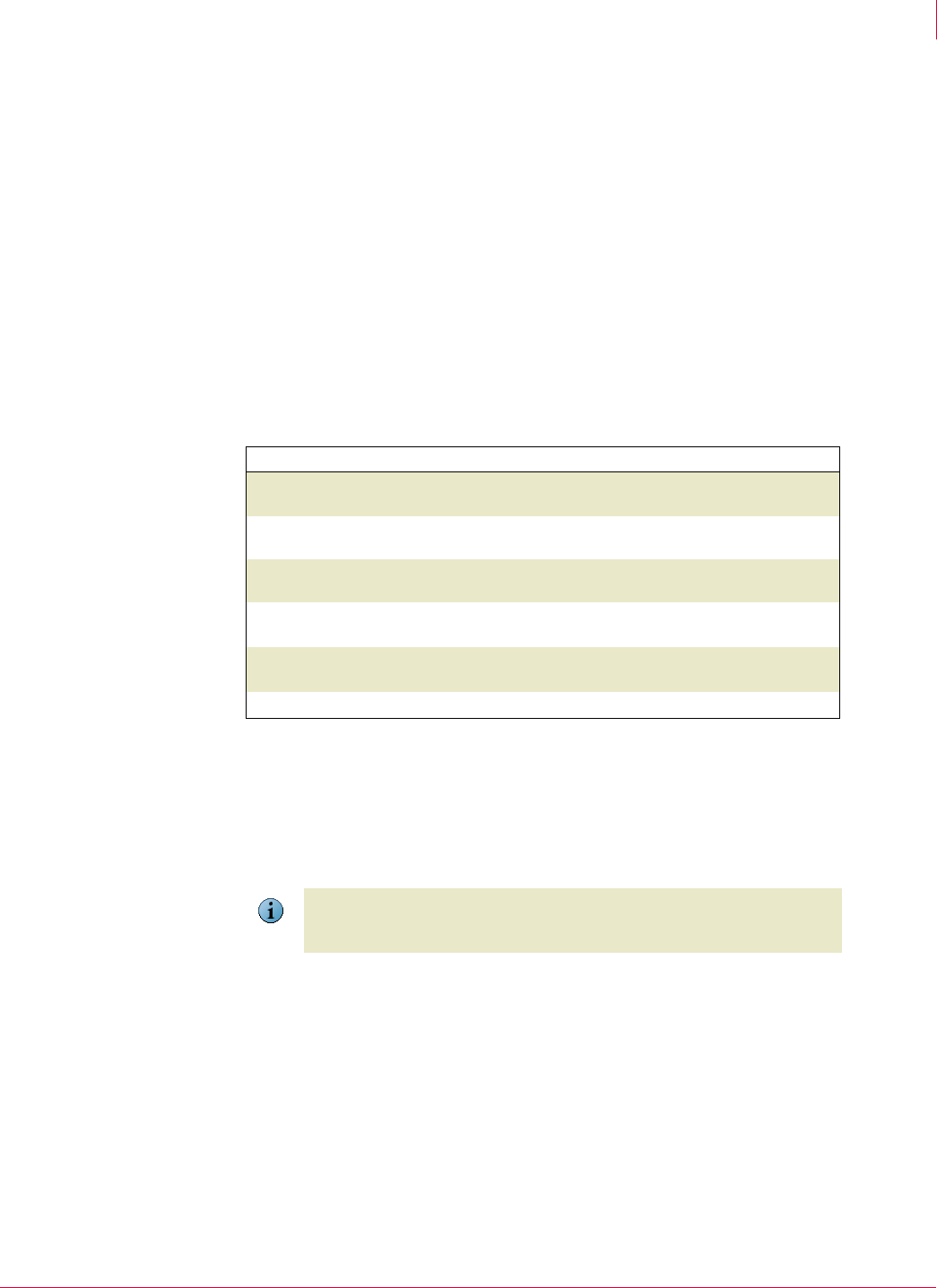
39
McAfee
®
Host Intrusion Prevention 6.1 Product Guide IPS Policies
Configuring the IPS Protection policy
4
These levels indicate potential danger to a system and enable you to define specific
reactions for different levels of potential harm. You can modify the severity levels and
reactions for all signatures. For example, when suspicious activity is unlikely to cause
damage, you can select
ignore as the reaction. When an activity is likely to be
dangerous, you can set
prevent as the reaction.
The
IPS Protection policy has several preset policies from which to select. If the preset
policies do not provide the selected option combination you want, create a new policy
and select the required options. Selections in the
IPS Protection policy dialog box vary
depending on the selected policy.
To configure the IPS Protection policy:
1 Expand the
IPS feature, and click Edit on the IPS Protection category line.
2 To apply a preset policy, select it in the policy list. Click the policy name icon to view
the settings:
3 Click
Apply.
To create a new IPS Protection policy:
1 Click Edit on the IPS Severity category line, and select New Policy in the policy list.
2 In the
Create New Policy dialog box, select the policy to duplicate, type the name of
the new policy, and then click
OK.
Select this policy... For these options...
(Basic Protection
(McAfee Default))
Prevent high severity level signatures and ignore the rest.
(Enhanced Protection)
Prevent high and medium severity level signatures and ignore
the rest.
(Maximum Protection)
Prevent high, medium, and low severity level signatures and
log the rest.
(Prepare for Enhanced
Protection)
Prevent high and log medium severity level signatures and
ignore the rest.
(Prepare for Maximum
Protection)
Prevent high and medium severity level signatures, log low
severity level signatures, and ignore the rest.
(Warning)
Log high severity level signatures and ignore the rest.
Note
Create a new, duplicate policy when viewing the details of a preset policy by clicking
Duplicate at the bottom of the policy dialog box. Type the name of the new policy and
indicate whether to assign the policy immediately to the current node.
